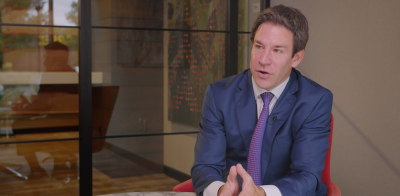Unfortunately, May’s short-term respite from relentless capital market losses has come to a painful end (so far) in June. Both equities and bonds are suffering major losses once again as the galactic mean reversion between financial assets, security fundamentals, the real economy and labor continue at light speed.
- The consistent driver of market pain throughout the year has been hotter inflation leading to more aggressive assumptions on the size and speed that the Fed will have to tighten monetary policy. Both the Russian invasion of Ukraine and China’s bizarre Covid Zero lockdown policy have been additional kicks in the teeth to hopes that inflationary pressures could be constrained effectively without inducing excessive levels of economic and market trauma.
- The more recent factor enhancing equity market pain is the increased probability of a recession driven by collapsing expectations for future consumption and investment. If the U.S. economy pitches into a recession, forward expectations for earnings growth will quickly evaporate or even drop. Thus, we are transitioning very rapidly from an environment of multiple compression with healthy expected earnings growth to one of multiple compression into significantly lower earnings growth and potential declines. It is dark days indeed for 60/40 asset allocation.
- Thus, the three potential (highly divergent) economic outcomes markets are grappling with now are:
Thread the Needle: The Fed somehow, some way threads the needle and tightens policy enough to gradually bend inflation back to 3% without pitching the economy into a recession. Markets struggle primarily due to normalization of equity and bond valuations from excessive levels. The problem of course, is this least bad outcome scenario is getting less and less likely, as inflation is now fully entrenched in all aspects of the economy and particularly in labor markets, and recession risk has increased substantially.
Recession: The Fed does whatever it takes to break the current inflationary spiral, but even tighter financial conditions cause both businesses and consumers to pull back on investment and spending, and we enter at least a mild recession with declining corporate earnings. Unfortunately, the probability of this scenario has risen dramatically the past six weeks.
Sustained Inflation: The Fed continues to talk a good game about constraining inflation (at least now they are finally acting more aggressively), but ultimately does not have the will to do what it takes to break the current inflationary cycle. Economies, businesses, consumers and markets continue to struggle in a world of mid-single digit inflation for years. Despite rapidly elevating recession risk, the probability of sustained inflation continues to be much higher than at any point since the 1970s. - The best historical comparison of the current market environment based on these three scenarios is a combination of the 2000 to 2002 internet bubble collapse with some 1970s style inflation/stagflation thrown in to annihilate fixed income. From 2000 to 2002, equity multiples compressed dramatically (10 full turns for the S&P 500) and the U.S. economy had a mild recession. For now, five to eight turns of multiple compressions (from 21 to between 16 and 13) make much more sense than a full 10. Remember, however, that the 10-year Treasury yield entered 2000 at over 6% and provided a great deal of help to 60/40 portfolios as yields dropped (prices up) to under 4% toward the end of 2002. This time around, the 1970s style inflation/stagflation is driving yields higher and higher, and devastating securities with duration.
- Now that money supply growth has turned negative prior to the Fed hiking more than 75 bps and draining their balance sheet by more than $50 billion, one would logically think the sustained inflation scenario is dropping as the recession scenario increases. However, we urge caution at jumping to any firm conclusions. We are truly in unprecedented times and the Fed has yet to prove they will do what it takes (although they are slowly getting there). They have had months to reassess the naïve and overconfident assertion (at least after September of last year) that inflation would be “transitory.” They have only recently started to get more assertive on the pace and magnitude of hikes (75 bps more on the 15th, way to go) and have yet to significantly shrink the balance sheet. Furthermore, so far in June their balance sheet has actually gone up a few billion instead of down. There is not only a tremendous amount of inertia in asset allocation but with policy makers as well!
- Well, that was unfortunately quite a bit of bad news. So, let’s all put a smile on our face and focus on the good news! Through the efforts of a handful of firms over the past decade or so, alternative strategies once available only to sovereign wealth funds, massive pension funds, endowments and family offices are now readily accessible to individual investors. Alternatives are now truly democratized! Fight inertia and take advantage of these opportunities!
- In these uncertain times, it’s time to focus on alternatives that may protect capital and potentially generate positive returns in each of these three economic/market scenarios or at least two of the three. Seek the oasis in the desert with strategies which aim to offer the following: stability of principal/NAV, consistent income/total return and high income streams that trade at discounts to NAV, and those that can potentially benefit from market volatility. Additionally, identify strategies that aren’t fighting the fed, but instead High Five the Fed through economically resilient floating rate income streams. Don’t be a hero, protect capital, avoid averaging down into oblivion, don’t expect the skies to part anytime soon, and FIGHT INERTIA!



